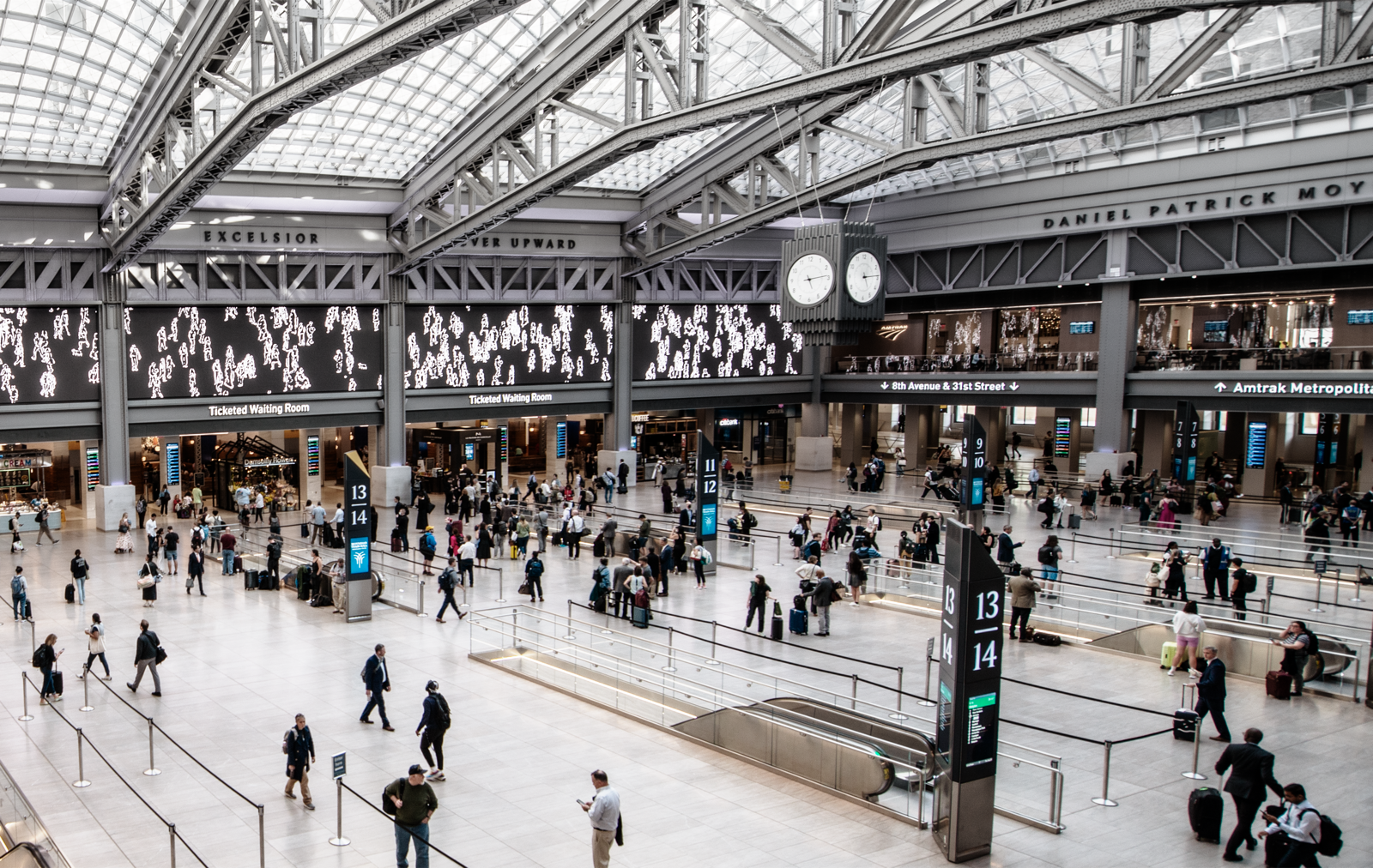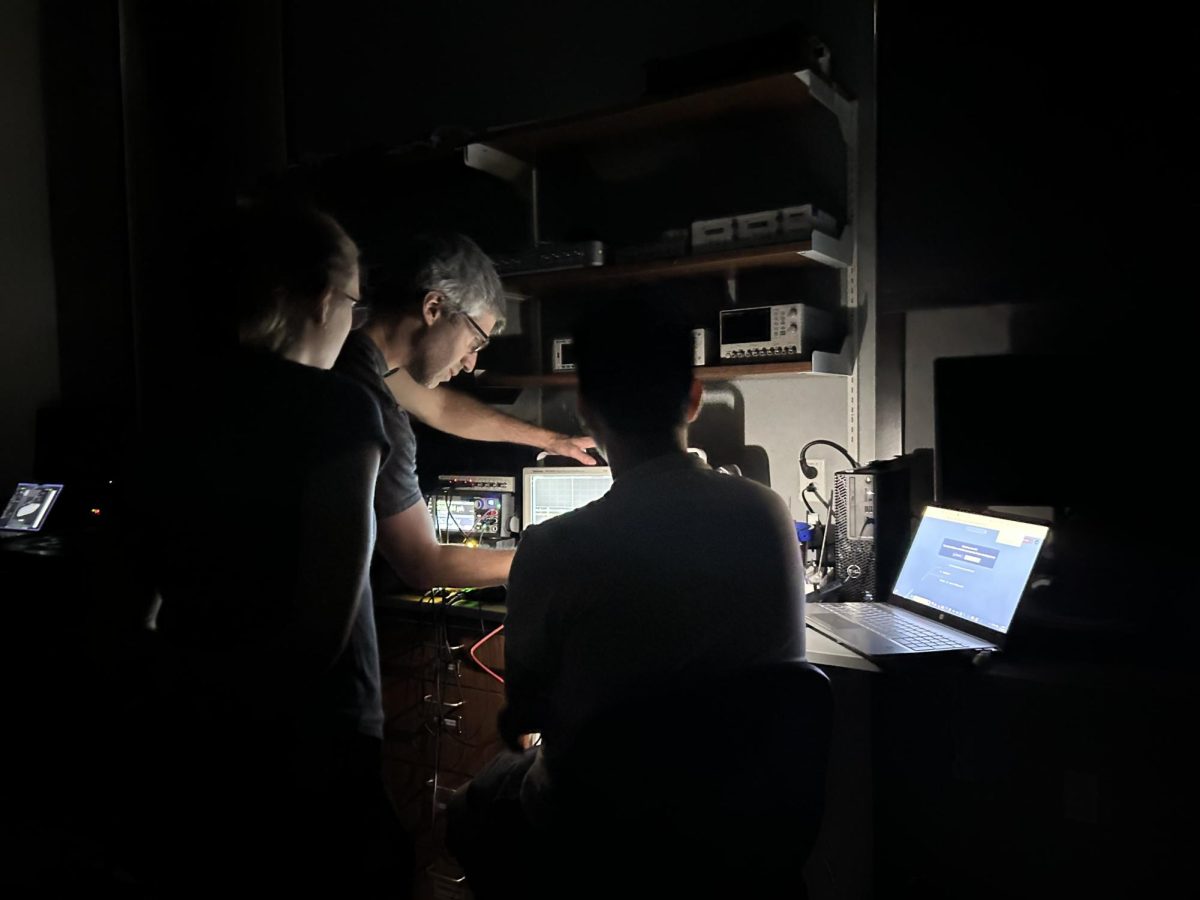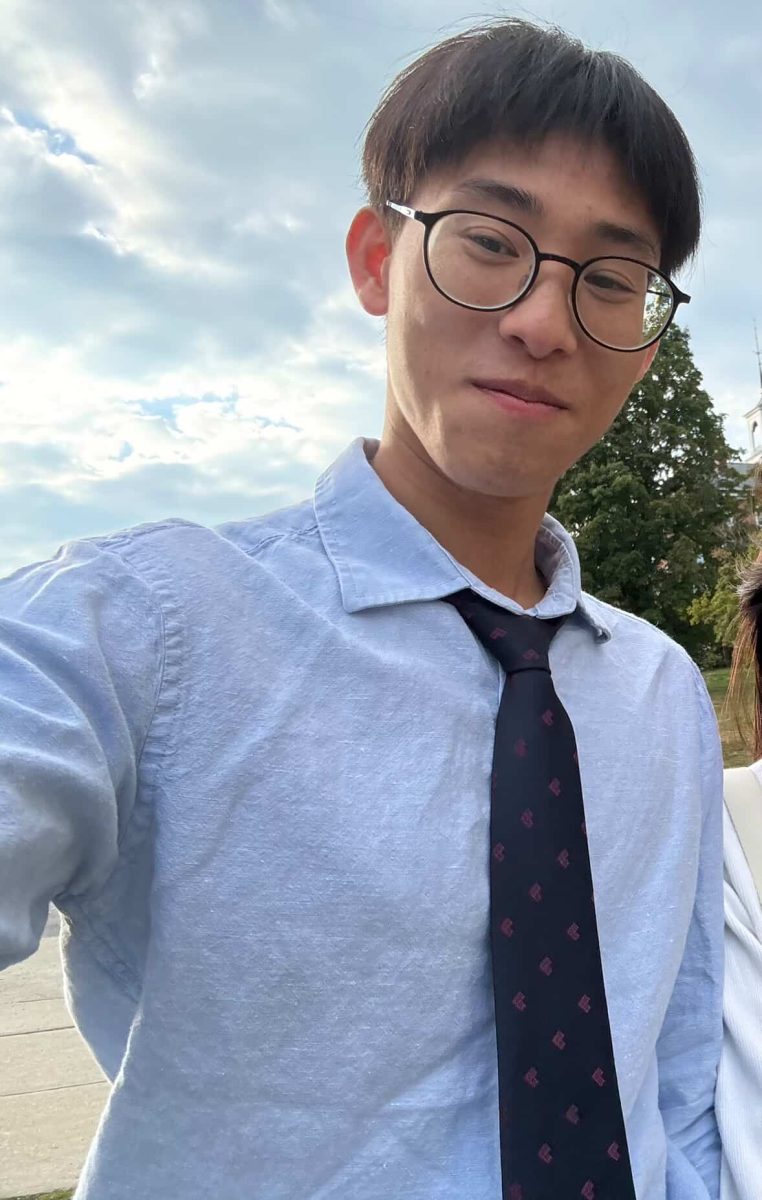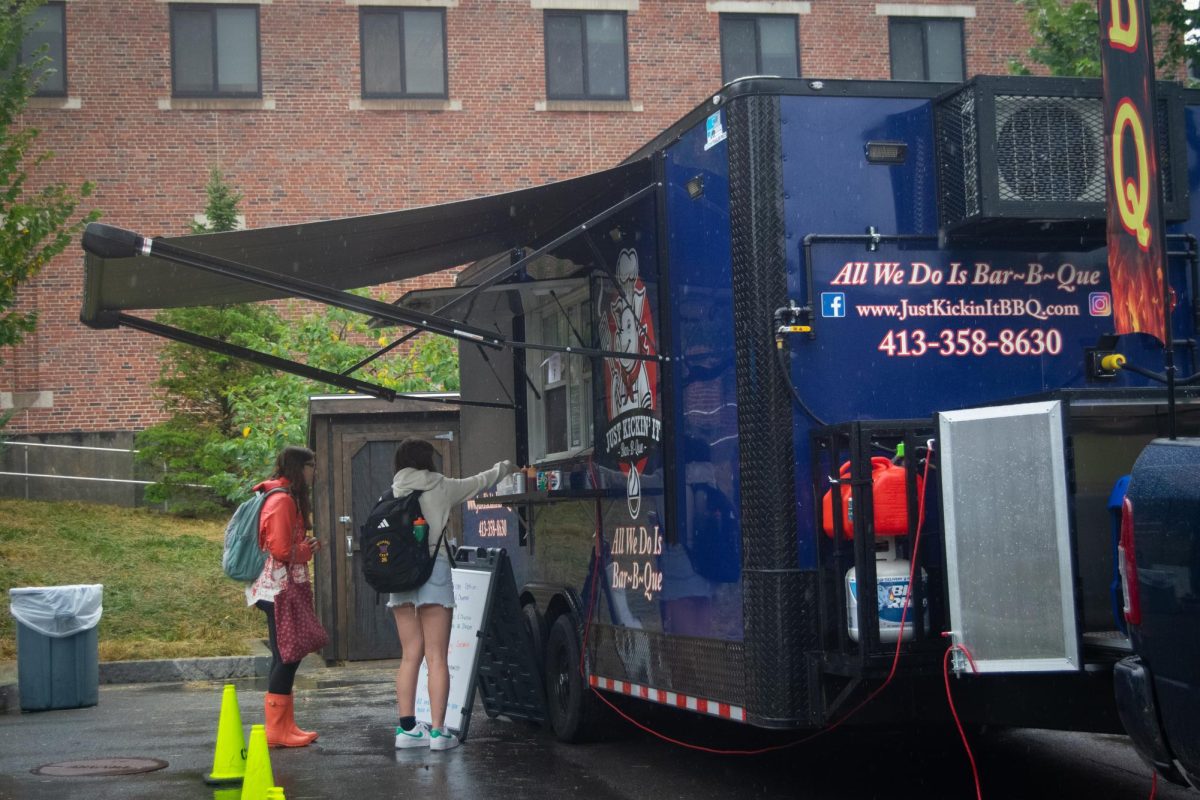
Animation, bicycles, Robert Moses, crowds — these are all concepts that have inspired multimedia artist and director Joshua Frankel ’02 throughout his career. The last object, however, is the newest focus for Frankel in his most recent work exploring the individual’s distinction and cohesivity within a greater multitude.
“When we look at a crowd of people, we see something that feels organic and feels chaotic,” Frankel said. “We have this sense that there are rules underlying it, that there are systems driving it, and that inspires us to explore things — plus people.”
A native New Yorker and an alum of a very large high school, Frankel was conflicted during his senior year about where to go to college. Once he decided on Williams, Frankel wasn’t conflicted over what to study — he knew he wanted to take art classes, although he didn’t yet know he would major in it.
“What I did was take classes in every subject in every class I could imagine majoring in, and eventually, I had eliminated all of them but art,” Frankel said. “By the end of the spring of sophomore year, it was the only thing I could imagine doing that quantity of and feeling inspired and jazzed about it.”
It was in one of these art classes that Frankel met Eve Biddle ’04, a contemporary artist and future co-director of the Wassaic Project, who later became his wife. Frankel said that, as an art major, he treasured the College’s community of art students and professors.
Besides his art classes, which focused primarily on drawing and painting, Frankel also developed a passion for computer graphics. “I took a lot of computer science classes for my Div. III [requirement],” he said. “I convinced them to let me take computer graphics classes that I didn’t even really have sufficient math or computer science background for because of this interest.”
Frankel also spent several summers as an intern at advertising studios that were beginning to incorporate animation, visual effects, and film into their work. “I got a taste for these tools, which were emerging,” he said. “I felt like I had a good left brain-right brain combination for [them].” Still, Frankel decided to study topics at the College that he would not be able to study once he graduated.
“Maybe I was at a short-term disadvantage against students who went to a more trade-based art school that was specifically teaching how to use some specific piece of software,” he said. “In the short term, they knew where the buttons were faster than I did. But I think spending time reading James Joyce is a long-term advantage, in my point of view.”
After graduating from the College in 2002, Frankel was not interested in making paintings and exhibiting them on gallery walls. “It didn’t click for me,” he said. “I felt a draw towards doing something creative and visual, but applied.”
As a result, Frankel’s first job after graduation was at a studio in New York that created photo-realistic visual effects for television commercials. There, he was “thrown into the fire,” as he described it, developing his ability to use digital tools and making films in a professional environment.
On the side, Frankel began to work on his own first short film, and he eventually quit his job after three years to finish it in conjunction with a series of silkscreen prints that were created in his bathroom, at home with the lights off for correct exposure.
“That was my first artistic project after college that had a film video component, and it had physical works surrounding it,” he said. “That has been the kind of template for [my] bodies of work that have followed since.”
Frankel’s 2006 film, entitled Bicycle Messengers, uses footage of midtown Manhattan traffic overlaid with animations by Frankel of bicycle messengers weaving between the cars.
“New York City was a lot different then — there weren’t bike lanes like there are now, so that film really came about in a moment when the conversation about making New York City more accessible to bicycles was gathering steam,” Frankel said.
After Bicycle Messengers, Frankel would go on to create a number of multimedia installations that were shown in France, England, Greece, and at events around the world. One project actually brought Frankel back to Williamstown — an opera staged for CenterSeries in the ’62 Centre for Theatre and Dance called A Marvelous Order about Robert Moses and Jane Jacobs, which he called his “most ambitious” project.
The opera is a collaboration between Frankel, composer Judd Greenstein ’01, and Tracy K. Smith, the 22nd Poet Laureate of the United States. “It is a project that is deeply interdisciplinary, bringing together music, poetry, and art,” Frankel said. “[The opera deals with] these questions — like the questions we’re talking about with bike safety — of the shape of our environment, who makes these decisions about what gets built and what gets destroyed, [and] how our behavior is impacted by the architecture around us.”
The opera premiered at the Center for the Performing Arts at Penn State in 2022, and producer Andrew Hamingson has begun to organize a tour of A Marvelous Order that would bring the completed version to New York City and other cities.
Frankel characterized his and Greenstein’s time at the College, as well as their experiences in New York City, as formative in shaping such an interdisciplinary project. His most recent installation is also interdisciplinary: “Within the crowd there is a quality,” a 30-second video art project that now runs every 15 minutes across a 160-foot wide LED display in Moynihan Train Hall in New York as part of the Art at Amtrak program. His solo show of the same name opened on Nov. 1 at Hesse Flatow, a gallery a couple of blocks away from Moynihan, and displays paintings, a sculpture, and a couple of small videos.
“My new work … is obviously also interested in public space,” he said. “The new work is about crowds and how we lose ourselves in crowds, for better or for worse, and I think that a public space like a train hall is an excellent place to explore that.”
To create this project, Frankel used footage of individuals walking in areas with vibrant New York street life that he shot a few years ago. He then identified 25 characters, including a dog and a pigeon, to create an ensemble, before isolating a single walk cycle for each ensemble member.
“Left foot forward, right foot forward, and if I take the two strides, then I can turn that into a loop and loop it forever,” Frankel said. Using his film background, he isolated how the character was moving through space — he likened it to walking on a treadmill — before adding controllable space back in. Based on this footage, Frankel then animated these figures by scanning drawings onto a computer and using code to orient their movements.
Frankel made sure to point out a subtle effect of syncopation in his work. “There are all of these bodies, and they’re walking at different speeds,” he said. “Over the course of the [installation] … their footsteps come into sync with each other and then fall out of sync.”
“When you’re in a train station, you have people who are each doing their own thing, and then a certain number of them will coalesce and come together and do the same thing, and then they’ll spread out and go along their way,” he continued. “That coming into sync isn’t meant to echo only getting on a train. I think it’s meant to point towards us as individuals losing that individuality for a moment and becoming part of this larger thing together, and that takes many many shapes — some wonderful and some terrifying.”
The installation holds personal meaning for Frankel, who grew up a few blocks from Moynihan and whose grandfather worked in the building during the Great Depression.
“To me, a train station is one of the most important buildings in the city,” he said. “Putting big advertising screens in a space like that — the advertisements are pointing their finger at you… One of the things this piece is doing is it’s reflecting the people. It’s not an exact portrait — I didn’t shoot this footage in this train station, [as] the train station didn’t exist when I shot the footage — but it is New Yorkers, and it is people. And it feels really nice to have this work change that pointing finger and create this moment of a reflection instead of [a] pointing imperative or something like that. I think that that comes across.”
Correction: A previous version of this article stated that Frankel was organizing the tour of A Marvelous Order. Producer Andrew Hamingson is organizing the tour.








